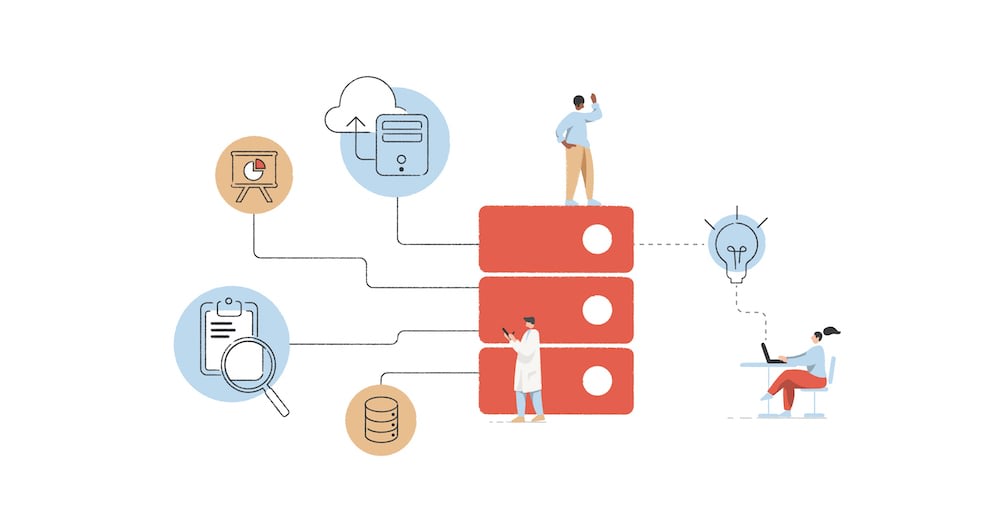Data
Mar 25, 2021
Understanding data and analytics maturity: How it’s critical to your digital success

In this six-part series, we discuss how our data & analytics maturity model can help organisations prepare their programmes for success.
In recent years, global volatility has steadily risen across economic, social, and political boundaries. Almost every country and organisation has been affected by a fundamental shift in the nature of their environment, yet there is one commodity that has consistently grown in value each year: data.
The world’s data marketplaces continue to grow regardless of sector, industry, or geography, with the advent of open data promising to enable disruption and innovation at even greater scale. This development has given rise to the proposition of shedding physical and industrial constraints to achieve strategic objectives, with much greater global alignment.
We recently discussed how open data can help with net zero targets in the Energy sector, explaining how technology and data are now the key forces driving business change. In order to realise the benefits, companies are maximising the value of their data and adopting advanced technologies, such as Artificial Intelligence (AI), into their new working routines.
What the data says about data
In a 2018 article, McKinsey observed that most businesses only unlock around 10% of potential value of their AI adoption, whilst Gartner has previously estimated that 60- 85% of big data programmes fail to deliver what they had intended.
To ensure the successful delivery of data & analytics programmes in our digitally-native society, it is imperative that organisations learn how to close the gap between ambitions and realisation. They can do this by approaching transformation in a structured way.
In our view, this has to start with understanding what data & analytics maturity means in the context of their business and ecosystem, deliberating the answers to questions such as:
Which C- suite goals are tied to data & analytics maturity and how will they be measured?
What do our ecosystem partners – for example, business or regulatory - expect from us in data?
What would maturity feel like ‘on the ground’ from our analysts to senior managers?
We see data & analytics maturity as multifaceted, encompassing changes to technology, organisation, culture, and how to measure return on investment. In this six-part series, we discuss how our data & analytics maturity model can and has helped organisations prepare their programmes for success.
Data & Analytics Maturity Model

In our experience, data & analytics programmes often lack a clear, holistic, and mutually agreed understanding of how gaps in analytical capabilities affect the organisation’s ability to use data.
For example, an organisation might have a clear strategy for its data but may lack the expertise required to utilise cloud platforms that will help them to achieve their goals. At the same time, the organisation may lack the necessary skills and cultural attitudes to make use of these new tools and create real business value, whilst underlying capabilities in data management may not exist or be understood.
We recommend that the journey to greater maturity in data & analytics begins with a maturity assessment to frame outcomes, success measures, and significant investments in the context of material gaps that need to be addressed. A holistic assessment considers eight critical aspects to determine and help address data gaps:
Strategy: Is there strong senior sponsorship for planned investments and a clear definition of the value that this will bring? Is there an agreed data strategy that maps KPIs and objectives through to processes and capabilities, as well as to critical data?
Alignment: Does the organisation understand the products and services required to support the business’ goals and realise its data strategy? Are use cases defined in the context of the business and data strategy, and is the business aligned on priorities?
Target Operating Model: Have the implications of data & analytics maturity on the operating model and ways of working been effectively defined and communicated? Does the business, from leadership down to functional teams, understand what these changes entail?
Data Services: Are there robust data management processes and mechanisms in place to enable strategic and sensitive data assets / liabilities to be utilised for business benefit? Does the organisation understand the necessity of more abstract concepts such as data governance?
Platforms: Are data & analytics platforms available and do they enable the organisation to be autonomous, innovative, and productive? Are the right technologies - for example, Cloud - being employed?
Culture: As data & analytics will be delivered by an organisation’s people, have cultural changes and upskilling been considered? Which policies, standards, and procedures will need to be updated to enhance data and data-related behaviours, such as data ethics?
Compliance: Has the organisation’s data and its usage been understood, including compliance requirements and how they are to be achieved? Does the organisation understand who is responsible for preventing data-related risks and how this will be carried out?
DataOps: Have the principles, practices, and tools required to deliver & monitor advanced analytics products at-scale been identified and adopted, such as Agile and DataOps?
Whilst the target score in each area will differ for every organisation, a holistic scoring will help you understand the key focus areas and risks for your data and analytics programmes.
This understanding will enable you to make informed decisions about your future plans, inform investment reviews, and set a baseline to enable continuous monitoring and improvement
What to expect in our next article
In our next article, we address the ‘Strategy & Alignment’ aspects of our maturity model. We discuss the importance of setting a clear strategy whilst utilising techniques such as UX design, explain why regular checkpoints are crucial to planning and execution, and discuss how you can demonstrate tangible ‘wins’ against your transformational goals. If you have any questions about the topics discussed in this article or would like us to help you assess your data maturity, please get in touch with one of our experts.
Contact Us
Ready to achieve your vision? We're here to help.
We'd love to start a conversation. Fill out the form and we'll connect you with the right person.
Searching for a new career?
View job openings